Urodynamic Unit Operator
Urodynamic tests are the only studies that allow analyzing the characteristics and functioning of the lower urinary system both in its filling phase (bladder capacity, sensitivity to filling, accommodation, analysis of the urinary incontinence parameters in the event that it is present) as in those of the voiding or voiding phase (study of eventual obstruction, contractile power of the detrusor muscle during urination and analysis of the muscular coordination between the bladder muscle and the sphincter system). However, the performance of urodynamic studies suffers from a broad lack of standardization in the different centers where it is performed.
Among the causes of this problem is the lack of up-to-date terminology and the carrying out of studies following different protocols according to each school or center.
ICS and SINUG are two societies whose main reason for existing is the need for multidisciplinary cooperation that offers a comprehensive vision of functional uroproctogynecological problems and solutions. The very development of this concept has forced us to adapt the initial concepts so that they are shared, accepted and followed by all professionals involved in dysfunctions of the pelvic floor and its related organs (bladder, genitalia and rectum). At this time we all feel a great need to disseminate the new standards / concepts.
In addition, there is a growing need for the creation of new functional urology and pelvic floor units, with urodynamic units. Consequently, there is a medical demand for training in urogynecology. One of the reasons for this boom is the progressive aging of the population, which is demanding a good number of actions regarding the improvement of the quality of life.
In summary, there is ample evidence regarding the lack of standardization regarding the development of urodynamic studies in Urodynamic Units, as well as a deficient terminological standardization (problems detected). On the other hand, the guidelines promulgated by international organizations, changing over time and with little penetration in the Ibero-American world, make it necessary to carry out an informative effort that tries to alleviate this problem (new regulations). For this reason, we see a clear need to develop a course that tries to alleviate these deficiencies.
For this, we have developed two courses in virtual format. The first (Operator), which is the one that concerns us, is an introductory course, leaving for the second (Director) the development of more complex problems and pathology. Once you have completed this online course, you will have acquired the necessary knowledge to become familiar with a Urodynamic Unit, take a functional clinical history, learn about the different types of study and how they are carried out, handle equipment or recognize the main artifacts.
Enrollment teaching periods:
1st term: 10/01/2021 - 12/26/2021
2nd term: 01/10/2022 - 03/27/2022
3rd term: 04/01/2022 - 06/26/2022
4th term: 07/01/2022 - 09/25/2022
The modules that make up the course are:
- Basic functional anatomy of the lower urinary tract - Bárbara Padilla Fernández, María Fernanda Lorenzo Gómez, David Hernández Hernández and David Manuel Castro Díaz
- Basic functional clinical history:
- Pre-urodynamic evaluation: directed anamnesis, urological physical examination (male and female), neurourological - Alicia Martín Martínez
- Questionnaires - Pedro Blasco Hernández
- Complementary studies: Voiding diary, Pad test, Functional ultrasound - Carlos Müller Arteaga
- Main urodynamic studies:
- Flowmetry - Carlos Müller Arteaga
- Cystomanometry - Carlos Errando Smet
- Pressure flow - Roberto Martínez García and Noelia Alonso Gracia
- Electromyography - EMG - Agustín Franco de Castro and Lluís Peri Acudí
- Video-urodynamics - Salvador Arlandis, Miguel Ámgel Bonillo, Esther Martínez Cuenca and Eduardo Morán
- Urethral pressure profile - Juan Pablo Valdevenito Sepúlveda
- Practical aspects related to the patient (position, placement, calibration and fixation of transducers, etc.) - Roberto Martínez García
- Quality control in conducting studies. Artifacts and main errors:
- Quality control and standardization in urodynamic studies - Juan Pablo Valdevenito Sepúlveda
- Frequent difficulties and mistakes - Bárbara Padilla Fernández, David Hernández Hernández and David Manuel Castro Díaz
- The pediatric patient: basic aspects - José Antonio March Villalba
- Organization of the urodynamics cabinet: Aspects related to the organization of the equipment, patient privacy, etc. - Pedro Blasco Hernández and Manuel Ramón Bernal Pacheco
Si ya te Matriculaste
ACCEDE al CAMPUS

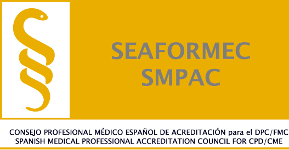
Management
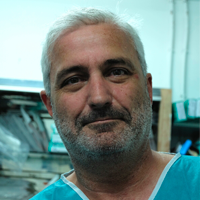
Dr. Pedro Blasco Hernández
Responsable Unidad Urología FuncionalHU de Valme, Sevilla
Nº de Colegiado 12346
Colegio Oficial de Médicos de Sevilla
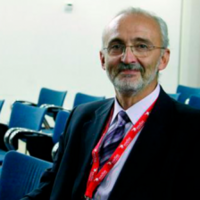
Dr. Agustín Franco de Castro
Unidad de Diagnóstico Urológico. Servicio de Urología.Hospital Clínic de Barcelona. Facultad de Medicina, Universidad de Barcelona

Dr. Roberto Martínez García
Responsable de la Unidad de Urología FuncionalHospital Clínico de Valencia
Nº de Colegiado 11621
Ilustre Colegio Oficial de Médicos de Valencia
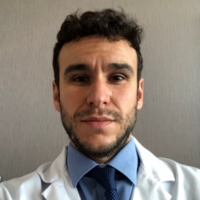
Dr. Gonzalo Morales Solchaga
Unidad de Urología FuncionalHospital Universitario de la Ribera. Alzira, España
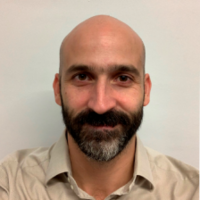
Dr. Lluis Peri Cusí
Unidad de Diagnóstico Urológico. Servicio de Urología.Hospital Clínic de Barcelona
